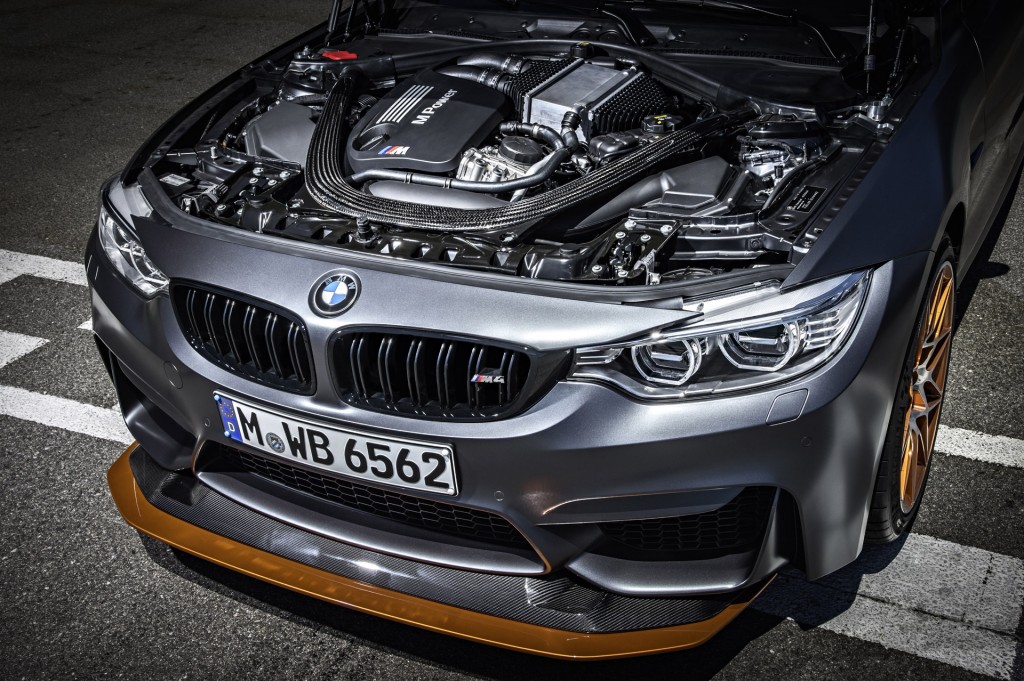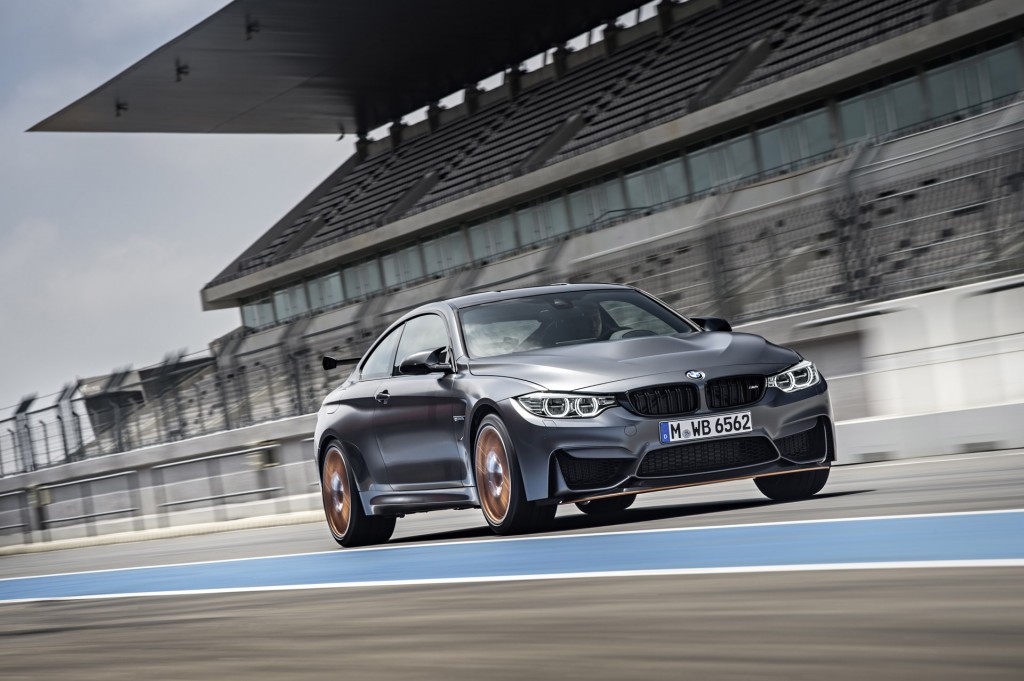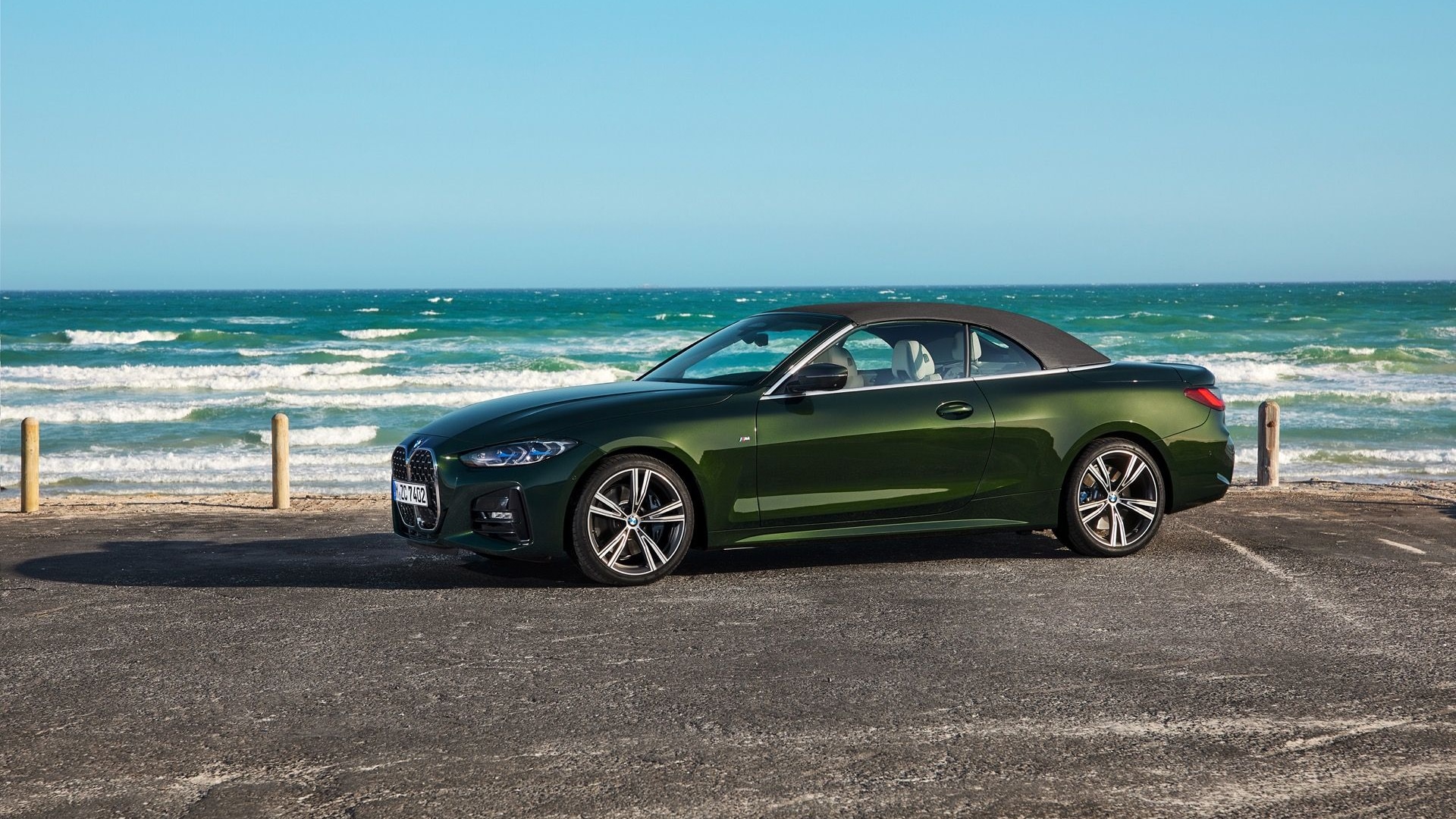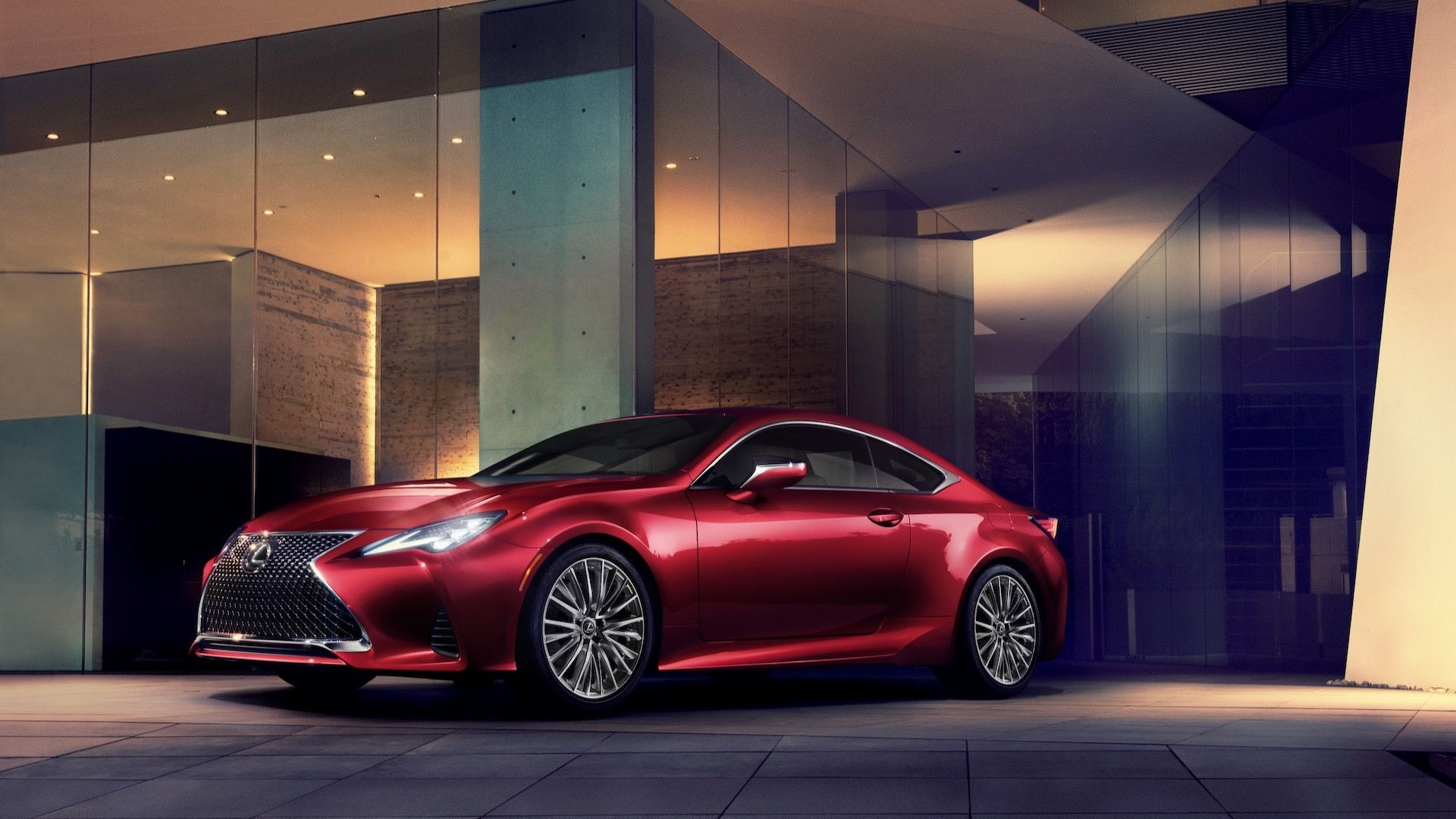The BMW M4 GTS is one of few production cars to use a water injection system. The M4 GTS sprays water into the intake manifold to cool down air for its engine.
How in the world does water help make more horsepower? That's the question Jason Fenske of Engineering Explained answers in this episode. First, a quick overview of the air intake system for the 3.0-liter turbo-6 engine.
The M4 GTS takes in air and it passes through the air filter into the turbo's compressor where it's heated. The air then makes its way to an air-to-water intercooler where the compressed air cools down, and then into the intake manifold for the engine. The goal is to always push cooler, denser air into the engine, which also reduces knock.

2016 BMW M4 GTS
While the air-to-water intercooler is effective (BMW says it can reduce the air temperature from 320 degrees to 158 degrees), higher revs and more combustion cycles mean more heat will be produced. That's where the water injection helps.
When two conditions are met, the engine is revving over 5,000 rpm and the driver floors it, the water injection system kicks in. A water tank in the trunk pumps water to the engine, where injectors in the intake manifold spray water to create cooler air. The injectors spray water at about 145 psi. The water reduces in the intake air's temperature by another 77 degrees to 113 degrees.

2016 BMW M4 GTS
As the water evaporates, it absorbs energy from around it and cools down the air. Subaru uses a somewhat similar practice to cool down the intercooler in the WRX STI S209.
This leads us to how water actually makes more horsepower. The water itself doesn't create more power, but it lets the engine operate better. With cooler air, there's less chance for knock, so BMW was able to dial up the M4 GTS' boost pressure to 21.6 psi, up from 17.2 psi in the M4 Competition. With the extra boost, the M4 GTS makes an extra 49 horsepower.
We'll let Jason take it from here, so check it out in the video above.


